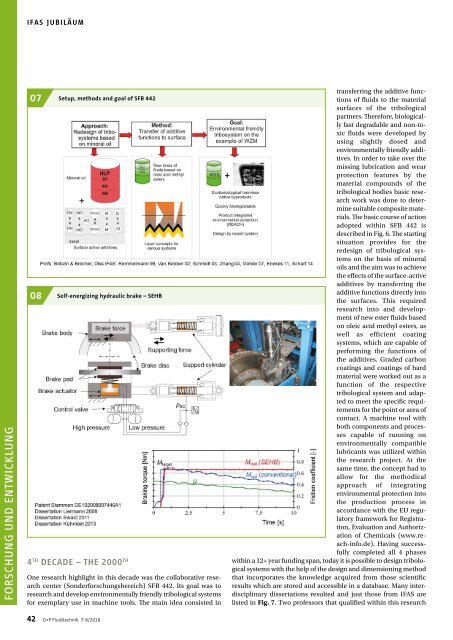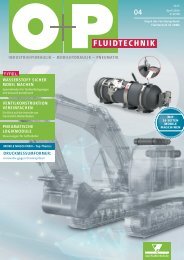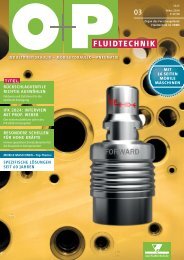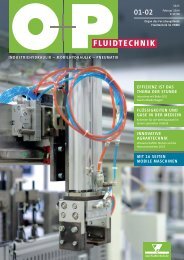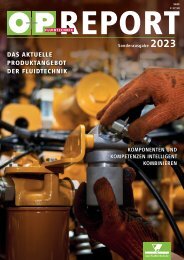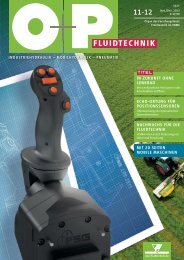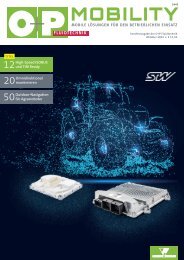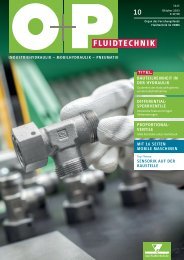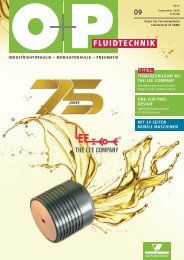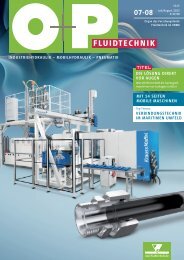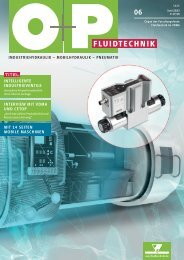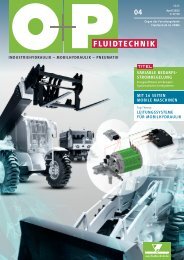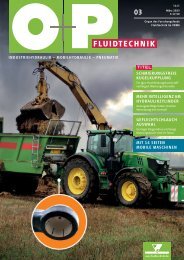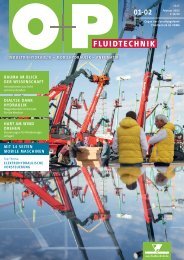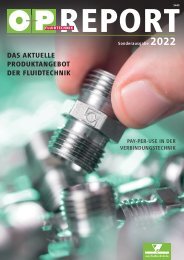O+P Fluidtechnik 7-8/2018
O+P Fluidtechnik 7-8/2018
O+P Fluidtechnik 7-8/2018
- TAGS
- fluidtechnik
Sie wollen auch ein ePaper? Erhöhen Sie die Reichweite Ihrer Titel.
YUMPU macht aus Druck-PDFs automatisch weboptimierte ePaper, die Google liebt.
IFAS JUBILÄUM<br />
FORSCHUNG UND ENTWICKLUNG<br />
07<br />
08<br />
Setup, methods and goal of SFB 442<br />
Self-energizing hydraulic brake – SEHB<br />
4 TH DECADE – THE 2000 TH<br />
One research highlight in this decade was the collaborative research<br />
center (Sonderforschungsbereich) SFB 442. Its goal was to<br />
research and develop environmentally friendly tribological systems<br />
for exemplary use in machine tools. The main idea consisted in<br />
transferring the additive functions<br />
of fluids to the material<br />
surfaces of the tribological<br />
partners. Therefore, biologically<br />
fast degradable and non-toxic<br />
fluids were developed by<br />
using slightly dosed and<br />
environmentally friendly additives.<br />
In order to take over the<br />
missing lubrication and wear<br />
protection features by the<br />
material compounds of the<br />
tribological bodies basic research<br />
work was done to determine<br />
suitable composite materials.<br />
The basic course of action<br />
adopted within SFB 442 is<br />
described in Fig. 6. The starting<br />
situation provides for the<br />
redesign of tribological systems<br />
on the basis of mineral<br />
oils and the aim was to achieve<br />
the effects of the surface-active<br />
additives by transferring the<br />
additive functions directly into<br />
the surfaces. This required<br />
research into and development<br />
of new ester fluids based<br />
on oleic acid methyl esters, as<br />
well as efficient coating<br />
systems, which are capable of<br />
performing the functions of<br />
the additives. Graded carbon<br />
coatings and coatings of hard<br />
material were worked out as a<br />
function of the respective<br />
tribological system and adapted<br />
to meet the specific requirements<br />
for the point or area of<br />
contact. A machine tool with<br />
both components and processes<br />
capable of running on<br />
environmentally compatible<br />
lubricants was utilized within<br />
the research project. At the<br />
same time, the concept had to<br />
allow for the methodical<br />
approach of integrating<br />
environmental protection into<br />
the production process in<br />
accordance with the EU regulatory<br />
framework for Registration,<br />
Evaluation and Authorization<br />
of Chemicals (www.reach-info.de).<br />
Having successfully<br />
completed all 4 phases<br />
within a 12+ year funding span, today it is possible to design tribological<br />
systems with the help of the design and dimensioning method<br />
that incorporates the knowledge acquired from those scientific<br />
results which are stored and accessible in a database. Many interdisciplinary<br />
dissertations resulted and just those from IFAS are<br />
listed in Fig. 7. Two professors that qualified within this research<br />
42 <strong>O+P</strong> <strong>Fluidtechnik</strong> 7-8/<strong>2018</strong>


